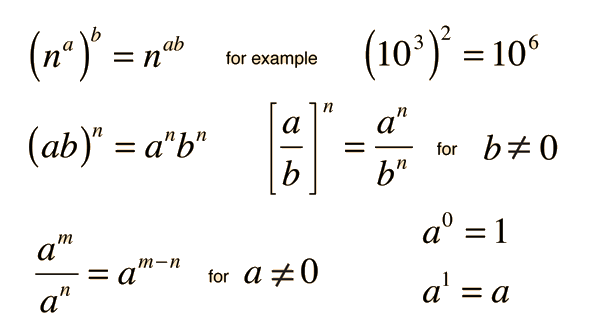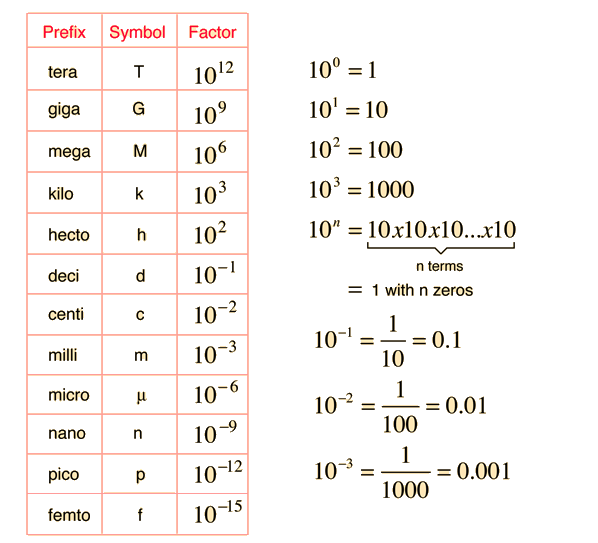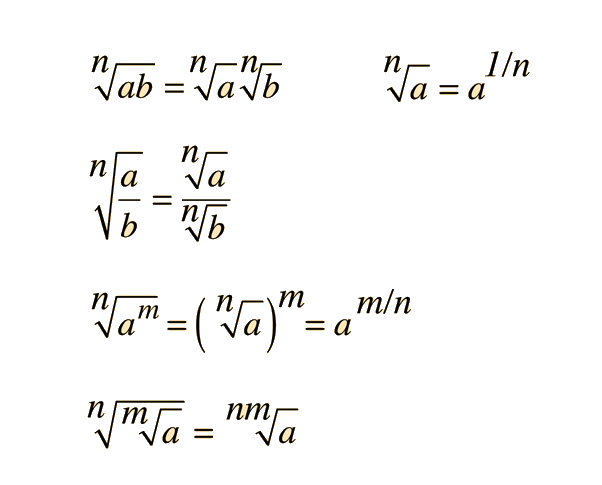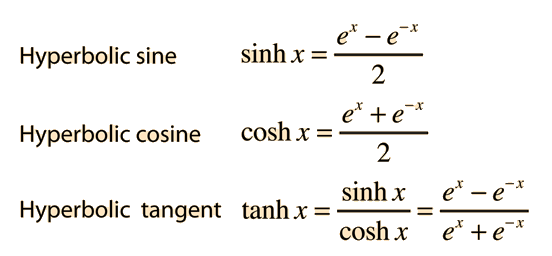Basic Combinations
Since the raising of a number n to a power p may be defined as multiplying n times itself p times, it follows that

The rule for raising a power to a power can also be deduced

| HyperPhysics*****HyperMath *****Exponents | R Nave |
Basic CombinationsSince the raising of a number n to a power p may be defined as multiplying n times itself p times, it follows that  The rule for raising a power to a power can also be deduced  |
Index | ||
|
Go Back |
Powers of TenFor very large or very small numbers, it convenient to use the "scientific notation", i.e., to express the numbers in terms of a power of 10. Standard prefixes are used to denote certain powers of 10:  |
Index | ||
|
Go Back |
Radical Combinations |
Index | ||
|
Go Back |
Euler RelationshipThe trigonometric functions are related to a complex exponential by the Euler relationship  From these relationships the trig functions can be expressed in terms of the complex exponential:  |
Index | ||
|
Go Back |
Hyperbolic FunctionsThe hyperbolic functions can be defined in terms of exponentials.  There are closed-form expressions for the inverse hyperbolic functions:  An application of the hyperbolic tangent is in calculating the speed of ocean waves. The hyperbolic cosine and its inverse are encountered in fluid friction in the case of quadratic drag. |
Index | ||
|
Go Back |